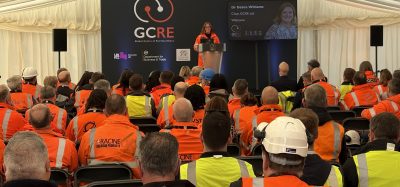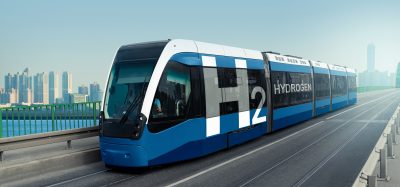Turkish state rail: past, present and future
Posted: 3 April 2006 | | No comments yet
TCDD is celebrating its 150th Foundation Anniversary this year. The history of Turkish railway commenced with the I·zmir – Aydin line, the foundation of which was laid on September 23 1856. After that foreign states, particularly England and Germany, arranged licenses for railway construction on the Ottoman lands. A total of 8619 km of rail […]
TCDD is celebrating its 150th Foundation Anniversary this year. The history of Turkish railway commenced with the I·zmir – Aydin line, the foundation of which was laid on September 23 1856. After that foreign states, particularly England and Germany, arranged licenses for railway construction on the Ottoman lands.
A total of 8619 km of rail was laid on the Ottoman Empire between 1856 and 1922.
Approximately 4000 km of the railway lines remained from the Ottoman Empire within the border of the Republic of Turkey. In spite of so much poverty and technological insufficiency, The Young Republic, having been built by the Great Leader Atatürk, implemented approximately 3,300 km of railway construction between 1924 and 1940, and nationalised the railway lines owned by foreign states. During this pre-Republic period, while 70% of the railways were staying at the west side of the Ankara – Konya direction; 78.6% of the railways have been laid down at the western side in the Republic period.
In 1950, the length of railway was reached to 7,671 km.
In our country, there is a total of 10.984 km of rail. Mainline rail accounts for 8.697 km, and 2. 287 km is sideline. Electric power makes up 21%, 24%, 5% and 0.3% of these lines, with signal, double lines and triple lines respectively. For 97% of the present lines, monorail operation has been implemented. TCDD is a member of UIC, and conforms with the technical specifications and standards of the UIC with regard to all kinds of material procurement, tractive and trailing stocks as well as rail, superstructure, infrastructure and gauge.
Investment becomes a priority
Our railway sector, which had been neglected since 1946, recently became a state responsibility again and consequently the investment appropriation allocated to the railways between 2005 and 2006 took the first rank, in terms of investment size, among the state-owned economic enterprises.
In 2003 the following investment appropriations for the railways were allocated:
- In 2003: USD 349.077.000
- In 2004: USD 688.462.000
- In 2005: USD 930.597
- In 2006, only USD 619.606.000 investment appropriation is allocated for TCDD, however this figure is five times more than 2002.
TCDD, in order to develop the railways and to provide a more contemporary service, established some institutional targets to become more investment focused, customer focused, financial structure focused, employee and community focused, and process focused. The most important among these are:
- To introduce Turkish people to the fast train
- To improve existing system
- Reconstruction
- To ensure the private sector operates the railway
Fast train projects
Within the next ten years fast train lines will be constructed at the important lines, by investing 10 billion dollars to railways in our country. The fast train lines which are under construction and already planned are:
- Ankara – Istanbul fast train project: Thanks to the Ankara – Istanbul Fast Train Project, travel time will be reduced to three hours. It is anticipated that the first stage of the project would be completed in 2006, and the second stage in 2008. By means of this project, the travel time at the Ankara – Balikesir – I·zmir line will be shortened by two hours while the existing passenger portion, which is already 10% on this line section, will be increased to 78%.
- Marmaray (Istanbul Bosphorus Rail Tube Crossing): 76.3 km length of the surface metro line – sensitive to the environmental and historical tissue from Halkali in the Europe side to Gebze in the Anatolian side, continuous, contemporary, high capacity, fast, integrated with other transportation systems
- 75 thousand passengers per hour will be transported, one way, besides mainline transportation
It is aimed that this project will connect Asia and Europe with the iron railway networks and be completed in 2009.
- Ankara – Konya Fast Train Project: Currently the Ankara – Konya railway link is ensured, as a connection train, through 696 km of length Ankara – Eskiflehir -Afyon – Konya line and travel time is 10 hours 5 minutes. The travel time will be reduced to 1 hour 15 minutes by constructing a 212 km long new railway line at the Ankara – Polatli – Kocahacili – Konya Line of the Ankara – Konya Fast Train Project. This project is due for completion in 2007.
- BALIS5IH – YOZGAT – YILDIZELI·- SI·VAS NEW RAILWAY PROJECT: Ankara – Sivas line is 602 km and travel time is 12 hours. Thanks to this project, the Ankara – Sivas railway line will be shortened by approximately 131 km. The line will be constructed in compliance with a 250 km speed limit and consequently the Istanbul – Sivas travel time will be five hours.
- Bursa – Ayazma- Osmaneli Fast Train project: Thanks to Bursa – Ayazma- Osmaneli Fast Train Project, 105.5 km of double line railway, suitable for a 250 km speed limit, will be built. Consequently the Ankara – Bursa journey time will be two hours.
Our other projects, in addition to those above, are as follows:
Kars – Tibilisi railway project and Batum – Turkey railway connection
Turkey has no railway network connection to Azerbaijan and Georgia. The railway transportation between our country and the Turkish Republics of Middle Asia is possible via Iran.
The Kars – Tiflis Railway Project is aimed at providing a direct railway connection between Turkey and Georgia. The objectives of this project are: to establish a railway connection between Turkey, Georgia and Azerbaijan; to constitute an alternative corridor to the East – West corridor that passes via Iran; to connect the Turkish Republics of Middle Asia; to allow shorter and safer transportation from Europe to the Middle Asia Market; to provide economically-priced transportation from Middle Asia countries to Europe; to connect Middle Asia to the Mediterranean by means of railway-seaway combined transportation passing through Turkey – Georgia – Azerbaijan and Turkmenistan; and, finally, to place Turkey in an important position in the transit transportation relationship with Middle Asia.
The technical feasibility of the project was researched by the aforementioned General Directorate of DLH and the pre-study on a Turkey-Georgia direct railway connection was made with 1/25.000 scale maps, once the project had been included in the investment program. In this context, a total of 98 km of new railway is planned: , 68 km of which is on the Turkish side, around 30 km (Aktafl-Ahalkelek) on the Georgian side, and also the rehabilitaion of an existing 160 km length of the Ahalkelek-Marabda line.
The cost of the project – planned as a single line construction – will total US$ 252 million. The cost of this on the turkish side equates to around US$ 200 million; Georgian side approx. US$ 52 million. Both sides will be implemented within four years.
Hopa-Batum railway project
The Hopa-Sarp-Batum railway project is designed to facilitate transportation between Middle East Turkish Republics (established as a result of the disintegration of the Soviet Union) and our country, and via our country by utilising regional roads and ports. This project will also meet transportation requirements arising from the tourism activities and ensure connection with new railway lines such as Giresun-Tirebolu, Trabzon-Tirebolu-Diyarbakir and trabzon-Rize-Hopa lines. Finally, this project will connect the existing railway network of the Russian Federation via Caucasia to the Middle East Republics.
The Hopa-Sarp-Batum new railway project is 33 km in length and costs are estimated at approx. US$ 260 million.
Van Lake North Crossing Project
ElazigU –Mus5- Tatvan – Van Railway, the most significant line of the Turkey – Iranian link, is connected to the City of Kotur in Iran via Özalp district through Kapiköy Border Station.
In order to enhance commercial relations between Iran and Europe, and to accelerate the channels of trade between Iran and Turkey, the Van – Özalp – Kapiköy – Kotur railway was constructed in 1962 for freight transportation. It was planned so as to reach out to Europe, either via the Van – Tatvan ferry boat connection over the new line and Central Anatolia – Western Anatolia Railway lines, or through Mediterranean (Iskenderun – Mersin) and Aegean sea (Izmir) harbours or by the Edirne exit over Istanbul.
Over this route, which is the most important link with Iran, the Tatvan -Van ferry boat over the Van Lake is available.
The Van Lake crossing, with a length of 48.6 miles takes four to five hours under suitable weather conditions. During adverse, severe weather conditions, sailing cancellations, extended crossings and mechanical failures in ferries have led to considerable problems for transportation. The advantages of the route planned as a roadway crossing of Van – Tatvan are summed up below:
- Eliminate delays caused by a limited number of ferry boats
- Reduce subsequent economical loss
- Increased economical benefit to Turkey, thanks to a faster connection between Iran, Turkey and Europe
- Renewed focus on the historical, cultural and subsequent tourism potential surrounding the Van Lake
- Conveying GAP (the Southern Anatolian Project)
- To open a second gate to Iran using the Ercis5 AgUri railway
- To contribute, alongside the agriculture of the region, to the development of industry
- To create additional employment
The application projects of the Lake Van Northern Crossing project have been completed.
The technical specifications of the line:
Furthermore, by means of a loan from the EIB (European Investment Bank) an agreement has already been signed with Korea-based ROTEM for the procurement of 12 sets of DMU (Diesel Multiple Unit) composed of two wagons.
A contract was placed for the procurement of 32 commuter train sets composed of three wagons, the assessments have been completed and the contract came to signing phase.
An agreement was signed with the Spanish CAF for the procurement of ten sets of high speed trains, composed of six wagons, having a 419-passenger capacity enabling speeds of 250 km/hour. These trains will be put into operation at the end of 2007.
Research for placing a contract for 80 electrified locomotives in 2006 has started.
Railroad renewal and maintenance on the present network, standardisation, double line construction, signaling, telecommunication, international Ro – La and development of combined transportation, to enhance employee and customer satisfaction and universalise computer usage, are also ongoing. In addition, with the aim of increasing cooperation with third parties, a law has been enacted to enable trains to be owned by third parties on the TCDD lines.







